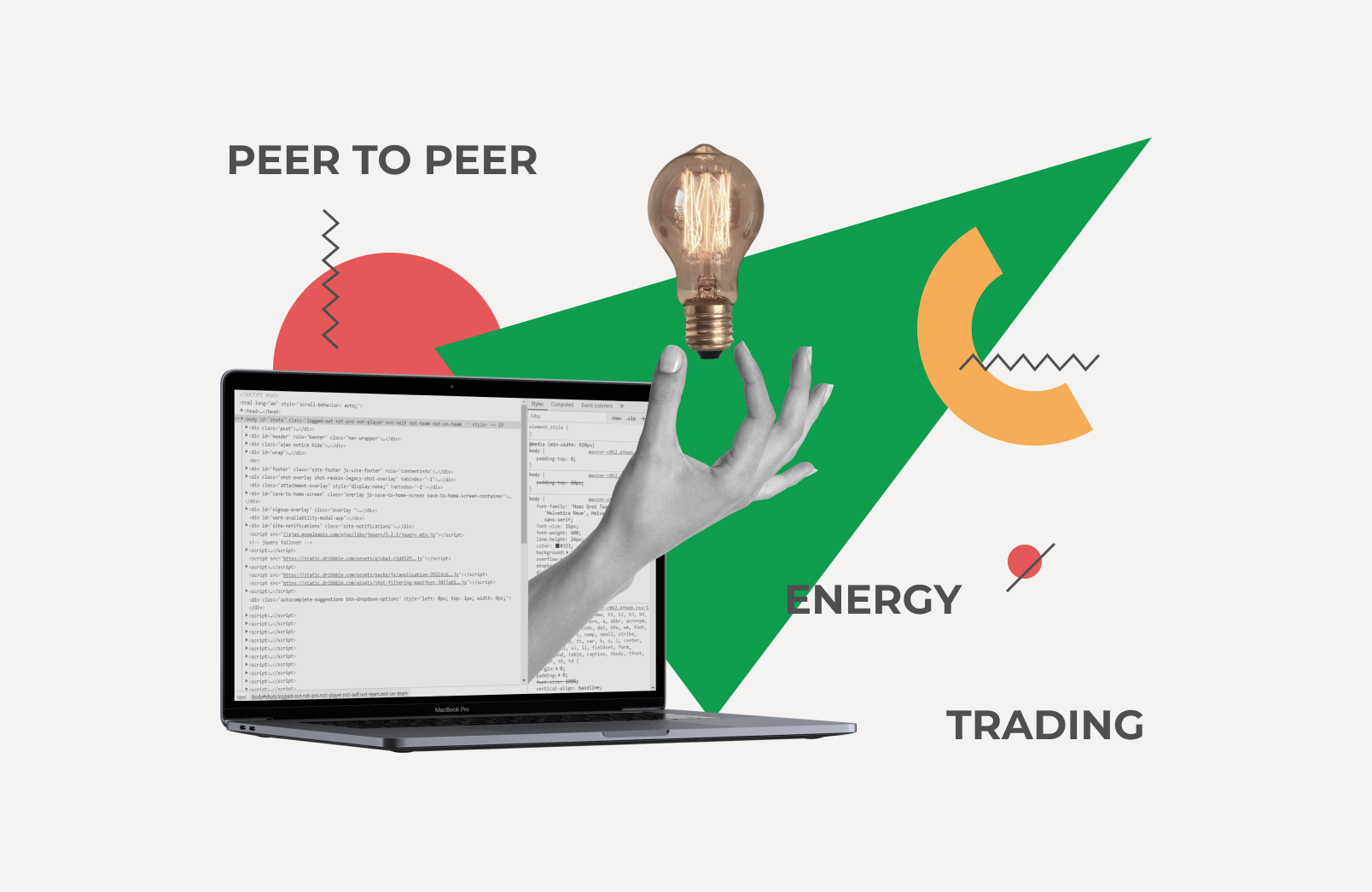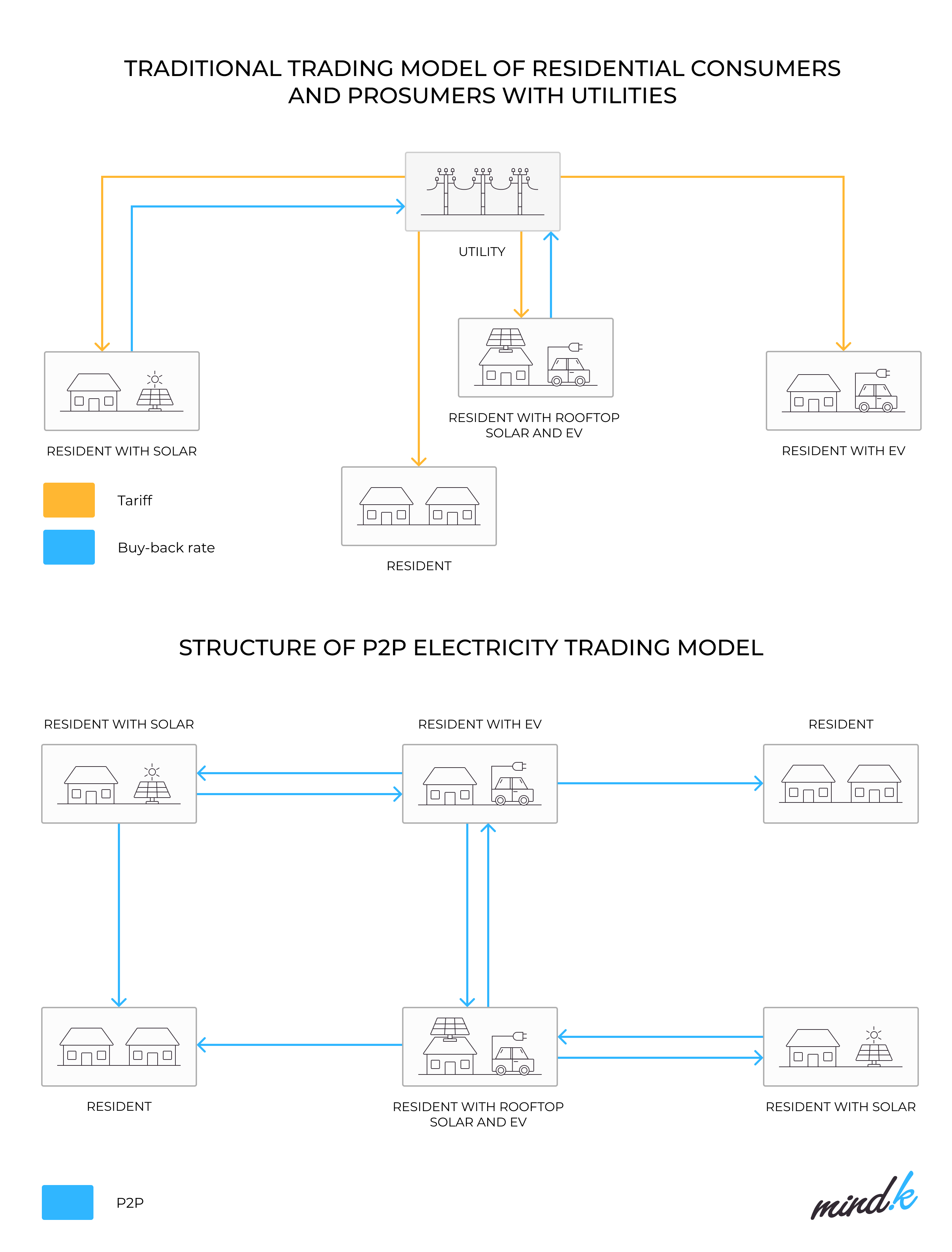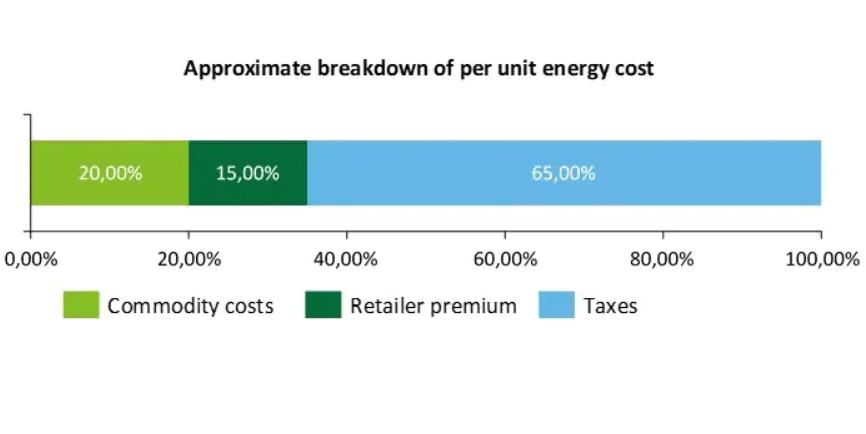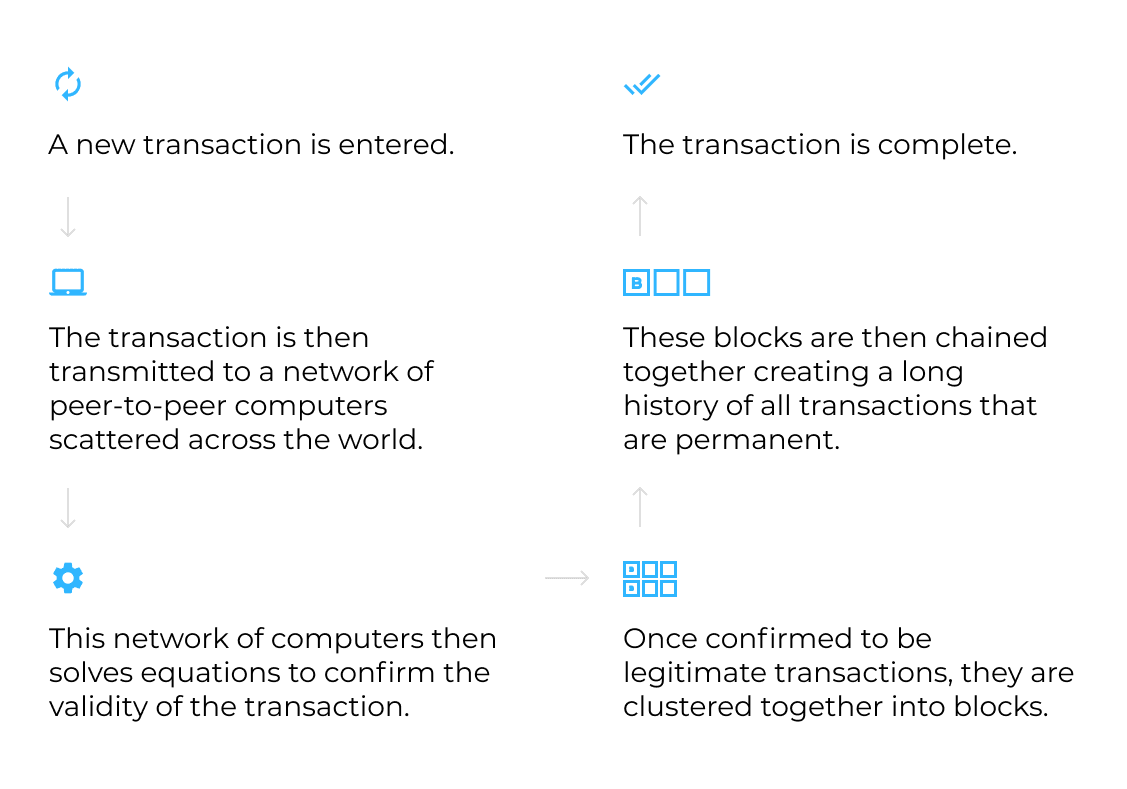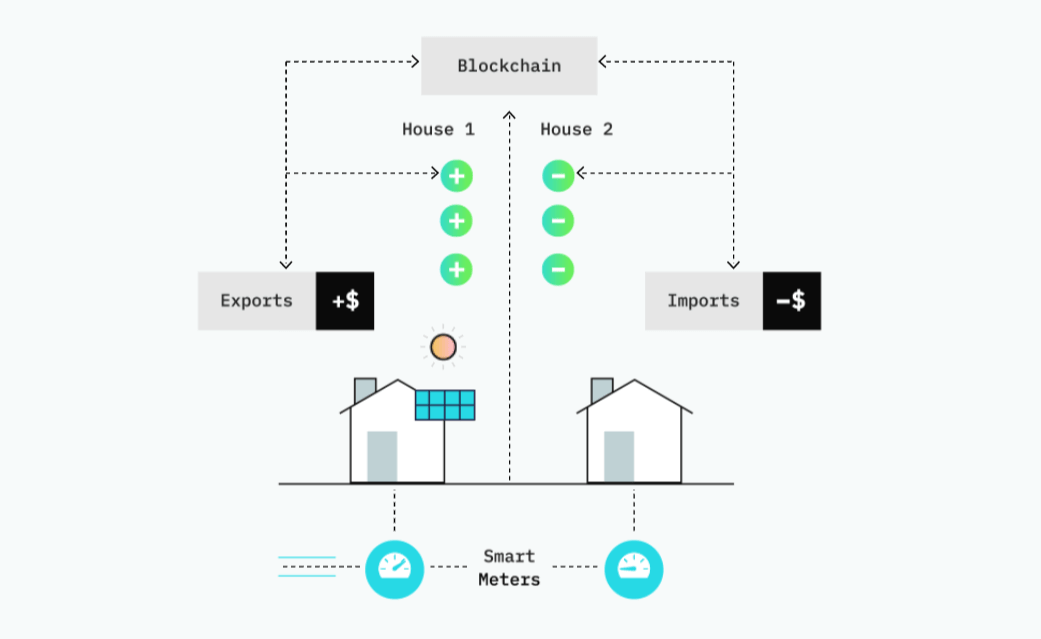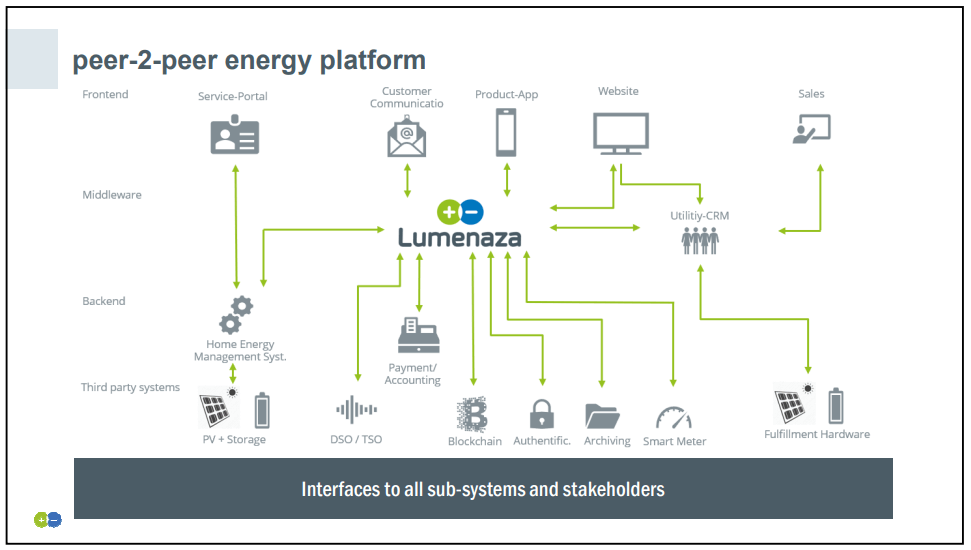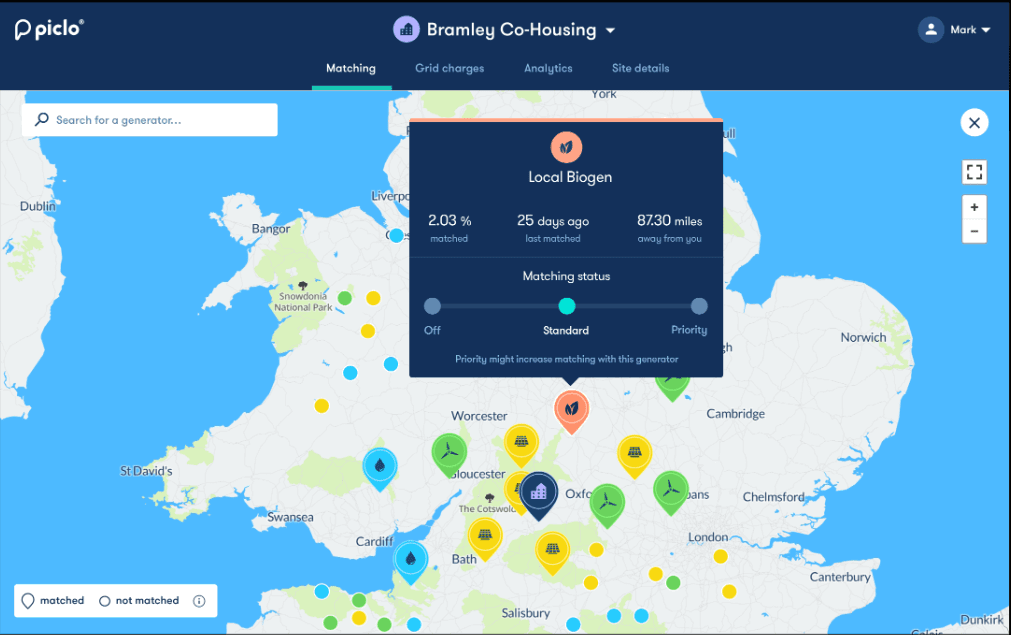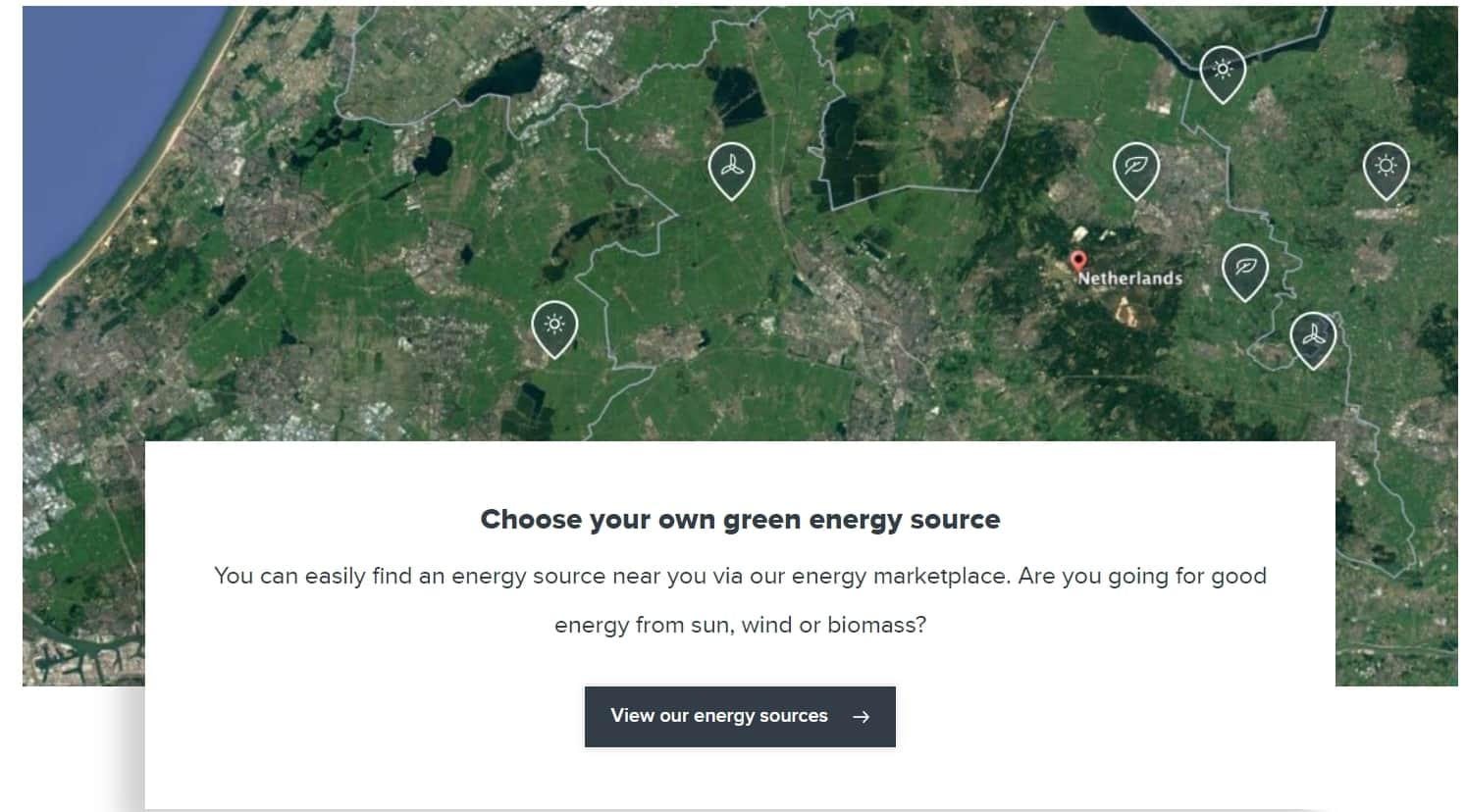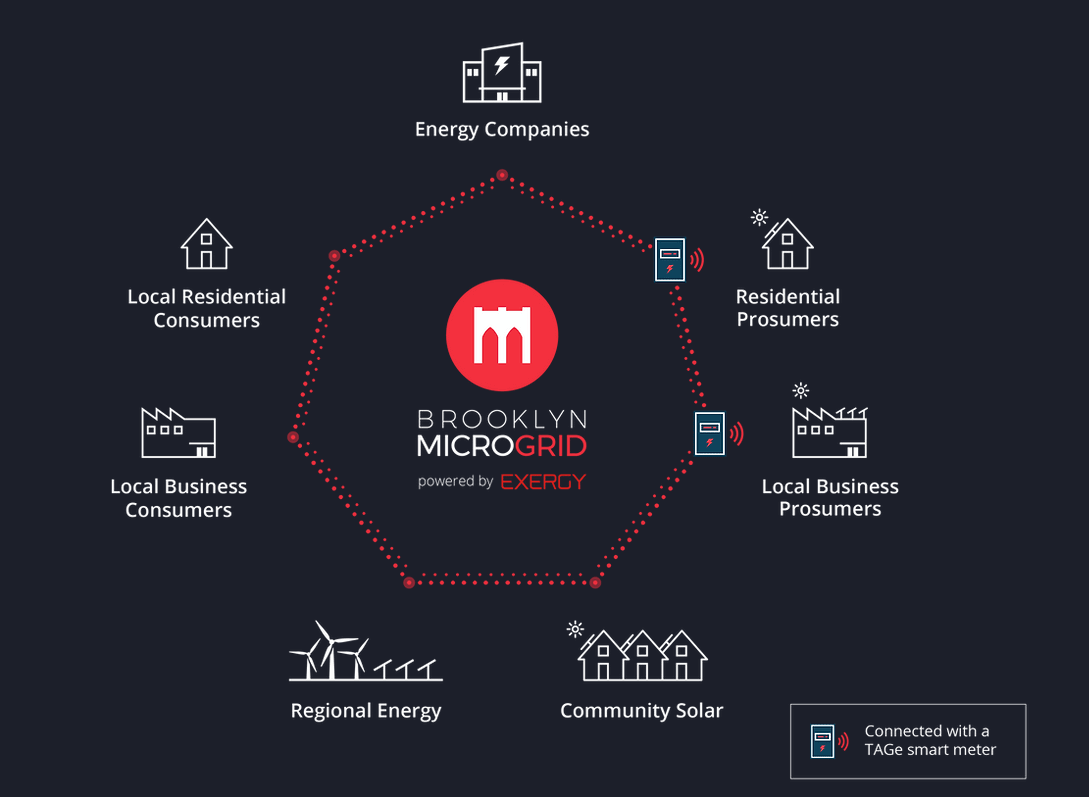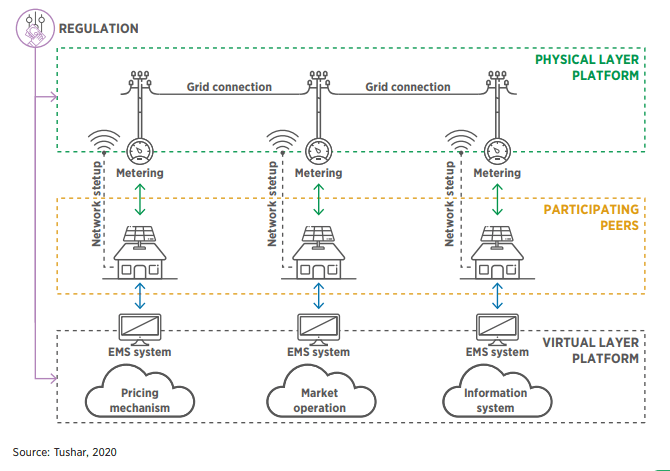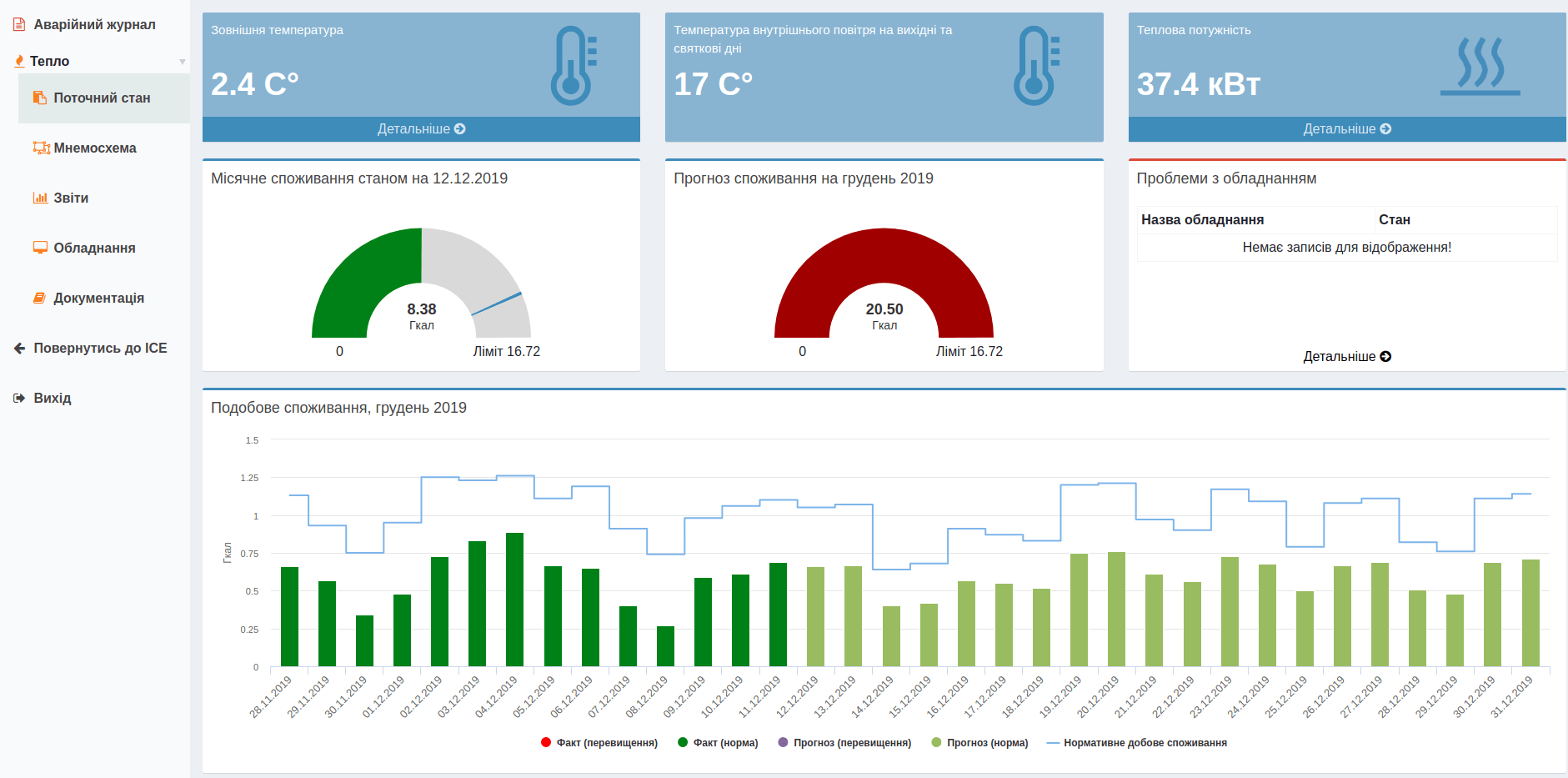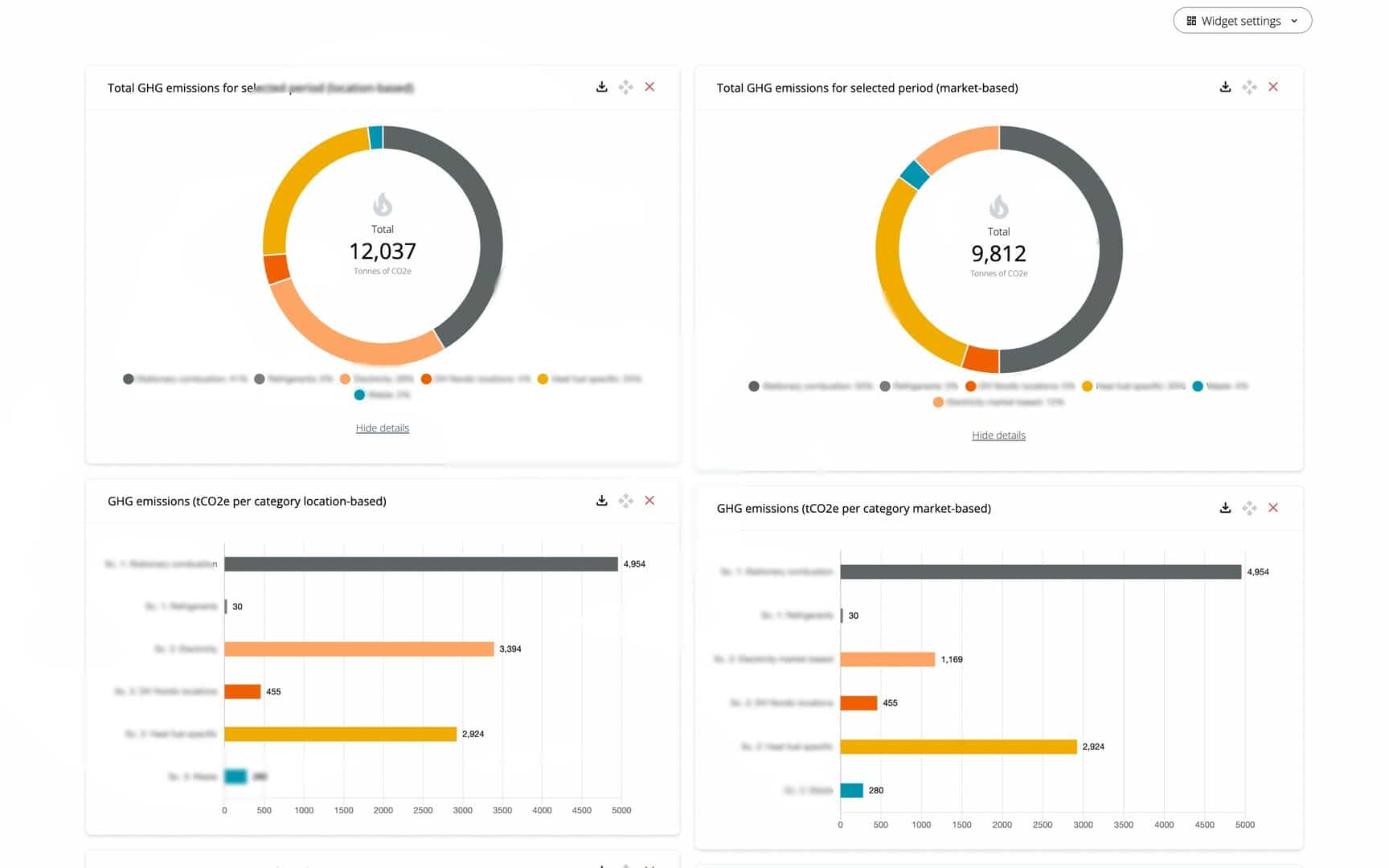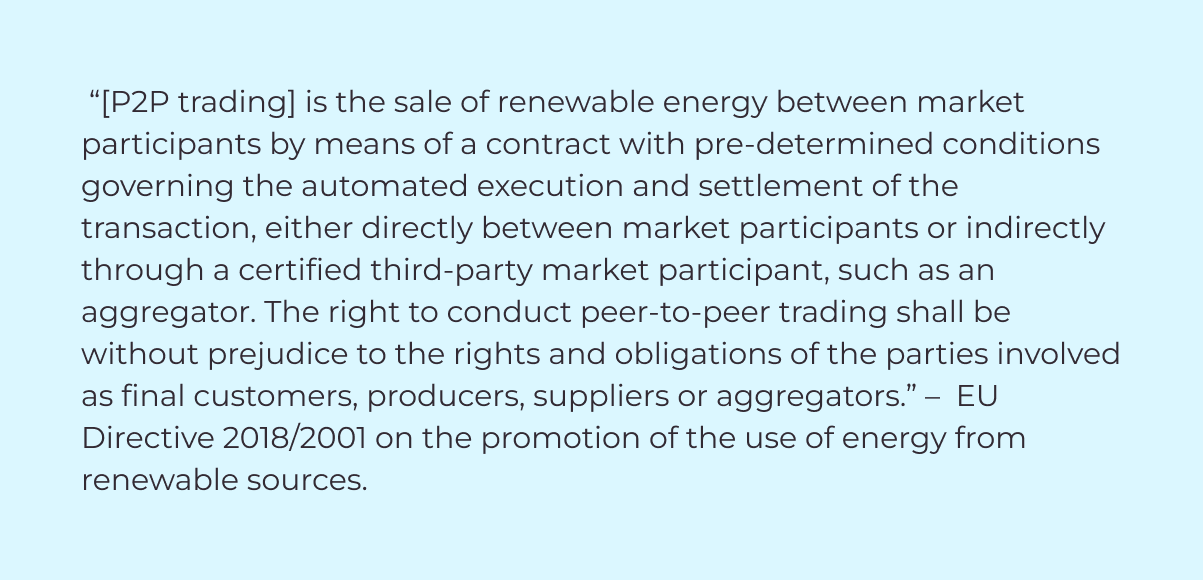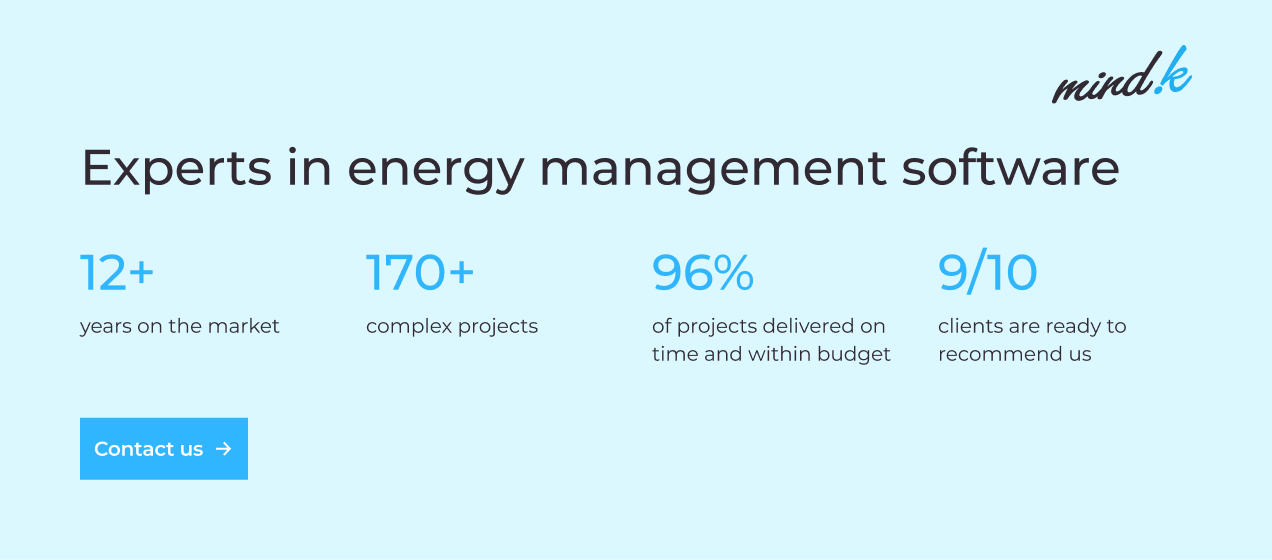As more consumers install small-scale renewables, there will be more surplus energy that needs to be stored or sold to those who need it. Peer-to-peer energy trading allows people to buy electricity directly from other consumers on digital marketplaces.
As a software development company, MindK has been working with the sustainability sector for the past 10 years. In this time, we’ve seen many exciting technologies change the niche. peer-to-peer (P2P) trading looks to be the next big thing that will disrupt the industry, according to researchers at Deloitte. So, here’s what you need to know about P2P energy trading.
Table of contents:
- What is peer-to-peer (P2P) energy trading?
- P2P energy trading benefits.
- What are the leading peer-to-peer energy trading startups?
- What is needed for P2P trading – hardware, software, and legal requirements.
What is peer-to-peer (P2P) energy trading?
To see why P2P trading is so promising, we need to first understand what’s wrong with the current model.
Our power grids are designed for centralized energy production. Power plants are usually located near major industrial sites. This was great in the past, but now consumers face an increasing need for electricity in their daily lives. Higher consumption at the grid’s periphery leads to a loss of power during transportation.
What’s more, many people now install solar panels and other renewables, becoming producers and consumers of energy (so-called prosumers). As such output varies during the day, balancing demand with supply becomes increasingly complicated.
To avoid power outages, Balance Responsible Parties (BPR) make 15-minute predictions of electricity consumption and try to match it with the appropriate generation. Consumers usually buy this energy via intermediaries called energy retailers that charge a premium for their services. Typically, the tariffs for buying energy are significantly higher than the buy-back rates for selling energy. So consumers get the short end of the stick.
P2P trading removes these intermediaries, allowing to buy energy directly from other prosumers. This usually happens on Uber-like marketplaces where both parties place their bids and can choose their energy suppliers. There are three types of P2P trading:
- A marketplace within a central grid. Consumers use the system to sell/buy energy as well as manage prices and risks in a free marketplace fashion. This set-up needs minimal investments for the marketplace owners.
- Local microgrids connected to the larger network. In addition to P2P trading, such a marketplace can sell the surplus energy upstream to the larger grid. Take, for example, the Schoonschip Amsterdam microgrid where electricity is traded between the community members. Yet, it remains connected to the later grid for added resilience. The investments are higher, yet the benefits are more than worth it.
- Self-sufficient microgrids. A local community can be disconnected from a central grid and make all transactions via a P2P marketplace. This arrangement requires the highest investments, offset by the highest cost savings. For this reason, entrepreneurs will likely start with the first 2 options and move to self-sufficient microgrids when the tech reaches maturity.
P2P energy trading benefits
- Reduced electricity costs
Maintaining power lines and other infrastructure for transmitting electricity accounts for about 41% of an average bill. Buying local energy can significantly cut the grid’s operating expenses. As there are no intermediaries, consumers get smaller bills.
The cost savings can be illustrated by an Australian P2P marketplace Power Ledger which saves on average $424 a year for its users. And those consumers who own a rooftop solar panel get 2x the savings they usually receive from their power plants.
Source: Deloitte, based on a break-down by Energy Retailers refined with APX price data
- Higher flexibility and green energy adoption
P2P marketplaces allow users to buy and sell clean energy at better prices. This promotes the adoption of decentralized power generation and storage. The analytical capabilities of such platforms give users more control over their consumption and energy price.
- Easier balancing and reduction in congestions
P2P marketplaces allow a better balancing of decentralized power supply in demand. Local consumption promotes green energy adoption and decreases the need to invest in infrastructure. An interesting example is the 2019 pilot project in P2P energy trading from Malaysia Energy Development Authority. Preliminary data shows that the pilot helped in load balancing, promotes the adoption of clean energy, and decreases congestion.
- Better access to clean electricity
With self-sufficient microgrids, P2P marketplaces can make electricity more reliable and accessible for the locals. Take, for example, a Bangladeshi P2P platform SOLshare. It connects homes in rural areas using a low-voltage direct current network. The project provides green energy for many consumers who had never had access to electricity before.
- Ability to choose your source of energy and monitor your energy usage
P2P trading allows consumers to pick where they want to buy electricity based on their monetary and environmental preferences. This gives them the ability to support specific projects in the community.
- Secure transactions
Blockchain technology allows to store information about all transactions in a decentralized manner. This information can’t be forged or altered otherwise. The tech can also support smart contracts – pieces of code that automatically execute and monitor the terms of a contract.
What are the leading peer-to-peer energy trading startups?
PowerLedger
Location: Perth, Australia
Founded in: 2016
Funding: $35M
PowerLedger was the first company in the world to develop a blockchain energy trading platform. It aims to help electric grids transition to a green decentralized future. So far, PowerLedger operates 30 microgrids in 13 countries. The model was a smashing success in a pilot project with the government of Uttar Pradesh state. Indian consumers could buy energy from their peers 43% cheaper than from the central grid. As a result of the project, the state authorities have adopted P2P trading as mandatory.
Source: PowerLedger
Lumenaza
Location: Berlin, Germany
Founded: 2013
Funding: $12.3M
Lumenaza is a German SaaS startup that offers a utility-as-a-service platform. The software covers almost all functions of a traditional energy service provider – tracking green energy generation, balancing demand with supply, advanced billing, and visualizing power flows.
The company’s main goal is to accelerate the energy transition of German industry and avert the new European energy crisis. This transformation goes along 3 main axes: decarbonization, decentralization, and digital transformation. In 2021, the startup raised €6,5M of additional funding for European expansion.
A schematic illustrating all the components of an advanced P2P energy trading platform. Source: Lumenaza
Piclo
Location: Toronto, Canada
Founded in: 2013
Funding: $10.5M
Piclo is one of the leading peer-to-peer trading platforms in North America. The company strives to help the country transition to 100% renewable energy sources by helping balance supply and demand in decentralized grids. As of the moment, it unites over 13.9 GW of green energy capacities, EV chargers, and batteries. In 2021, Piclo got £4,7M of funding from the Clean Growth Fund to attract new customers.
Source: Piclo
Vandebron
Location: Amsterdam, The Netherlands
Founded in: 2013
Funding: $2.2M
Vandebron is a utility company and a P2P trading platform with over 200,000 customers in the Netherlands. The country has a problem where fossil fuel energy is often bought with foreign sustainability certificates and sold as ‘green’ energy. This way, households and businesses still consume dirty electricity while being sure it’s good for the environment.
Transitioning to 100% renewables will, therefore, require full transparency about the origin of the energy. Vandebron gives users a choice of where to buy energy for a monthly fee of $12. The platform takes care of grid balancing and predicts the energy generation for the owners of renewable resources.
In 2019, the company was about to become profitable. Later this year, it was acquired for an undisclosed amount by Essent – one of the country’s largest utility providers.
1
Source: Vandebron
Brooklyn Microgrid
Location: Brooklyn, USA
Founded in: 2016
Funding: N/A
Brooklyn Microgrid started as a grassroots initiative by the local community. The blockchain-based marketplace for P2P solar energy trading in NY. The platform allows users to choose their source of electricity according to its carbon footprint. The system supports automated energy trading in near-real time. It works with distributed system operators, providing them with consumer data they can use to manage the power usage, balance loads, and respond to demand at negotiated rates.
Some traditional energy suppliers like SunContract, Vandebron, and Engie NL have also dabbled with P2P business models as a part of their digital transformation efforts. If you want to explore this business opportunity, you can start with digital transformation consulting from experienced consultants.
What is needed for P2P trading – hardware, software, and legal requirements
There are a few crucial factors necessary to succeed with the P2P model.
- Hardware layer
To create an energy trading marketplace, you’ll need local renewable generators, people with on-site energy storage, and power lines to connect them into smart grids (nano-, micro-, and mini-grids). You also need a broadband Internet connection as well as remote network control and automation systems to enable P2P energy trading.
Another important component is the smart meters – devices that measure energy consumption. They can record a variety of data – current, voltage levels, power factor – and send it to grid operators every 15 minutes. This can solve a major challenge of determining the origin of energy. By integrating smart meters with a web-based system, you can track energy consumption in real-time and make accurate predictions.
We’ve tested out this combination on a project for one of our clients that manages over 30 energy-saving projects. The application we made takes readings from smart meters and weather stations to predict optimal usage of heating energy. Using this data, administrative and residential buildings can adjust their thermostats to save money ($600,000 a year in one region alone). You can use a similar principle in P2P trading.
Energy consumption forecast in a web-based system created by MindK [request a case study]
- Software layer
P2P trading is usually done via Uber-like marketplaces that connect energy producers and consumers. A web-based Energy Management System can collect data from smart meters, store it for later analysis, and process payments.
Advanced analytics is another must-have. Often powered by Artificial Intelligence, they predict demand, automatically match it with supply, and provide users with granular energy trading data. Sustainability software uses similar principles in analytics whether it collects data from smart meters or uses different inputs. For example, we’ve created a corporate social responsibility (CSR) system that analyzes various emission factors to determine the company’s environmental footprint. It visualizes different CSR metrics like emissions by locations and departments on customizable graphs.
Data visualization dashboard in CemaSys – a cloud-based CSR application used by Forbes 200 Companies [explore the case study]
Billing is a major challenge in P2P trading. The trick is to collect payments from the participants and redistribute them to the correct parties. Contributions to the grid must be managed without the traditional supplier. Failing to differentiate between the electricity provided by the supplier and the electricity provided by the marketplace users might lead to transaction errors. One way to solve this problem is to use smart metering to measure individual power generation and consumption in real-time. This guarantees that the amount of energy used by the participants matches the surplus sold by other users.
All transactions on the electricity market should be stored in an internal database. Based on these records, utility providers might include compensation for the energy sold by the participants in their energy bills. A P2P power system should track the exact time when energy is consumed to determine the correct prosumer to pay. You can also use Blockchain as an alternative database that’s proven to cut the transaction costs in P2P energy trading.
A suitable communication protocol is the last component of energy trading software. It acts as a coordinator for all consumers, energy producers, and platform/network/market operators.
- Favorable regulations and community rules
Legal issues remain one of the main barriers to P2P trading. Although the concept has global potential, P2P trading will have to happen within the state borders due to differences in legislation between different countries. What’s more, the creators will have to tailor their power trading platforms to regional legislation.
Relevant authorities will have to outline the rights and responsibilities of all parties on the market. They’ll have to answer questions like: “Should the state tax their profits?” “Should it apply feed-in tariffs to independent energy traders?” “Should the P2P community be treated as an energy supplier or a Balance Responsible Party?“
Setting up conditions for a successful P2P market will require creating a friendly legal framework. One of the first moves in this direction comes in EU Directive 2018/2001 on encouraging the consumption of green energy. The next step will involve the EU members translating the Directive into national laws.
In the USA, peer-to-peer trading is only allowed via microgrids that don’t utilize the central grid infrastructure (ARENA, 2017). This has so far limited the development of P2P energy trading platforms across the country.
The regulations of tomorrow could make a distinction between regular prosumers who only install renewables for their own needs and intensive prosumers who develop generation capacities with the explicit intent of selling the energy on a P2P marketplace. For example, Belgium’s capital canceled net metering in 2020. This has freed consumers that generate less than 10kVA of greed energy from the value-added tax.
P2P energy solutions only become viable once a certain number of consumers become willing to join the network. To succeed with your marketplace, you’ll need to organize the community rules around three main topics:
- Conditions to join/exit the community;
- Energy price that’s favorable to all participants; and
- Distribution rules that take care of situations when production falls short of consumption.
There are several ways to handle the last issue. You can either maximize value for the community, prioritize the most active participants (the fairness principle), or organize the trading around bids.
Conclusion
The world is moving towards decentralized, carbon-neutral grids. Peer-to-peer energy trading will allow buying and selling of green electricity on local marketplaces. The benefits range from lower costs to higher transparency and easier grid balancing. To succeed with the P2P model, you’ll need a solid technology backbone:
- Web-based EMS to gather data from smart meters.
- Predictive analytics to take care of volume and price risk management.
- Dashboard to visualize energy consumption.
- Open marketplace to connect consumers and producers (customer portal and/or mobile apps).
- Payment processing system to take care of transactions.
- AI and blockchain to improve your positioning after you’ve got the basics.
MindK has been building web applications and analytics for companies in the energy and sustainability sectors for more than 10 years. So, if you need help to realize your P2P idea, we’ll gladly provide all the necessary expertise. Just drop us a line and we’ll organize a free consultation with our experts.
